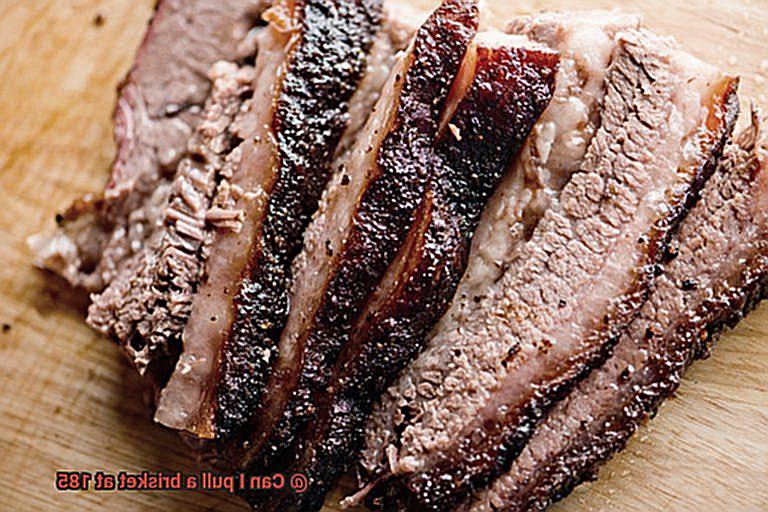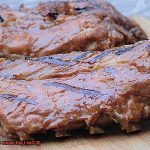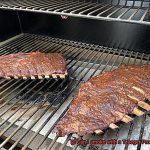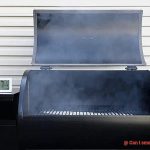Smoking a brisket is like embarking on a quest for culinary perfection. It’s a tantalizing dance between tenderness and smoky goodness that every pitmaster knows all too well. But here’s the million-dollar question that keeps igniting fiery debates: Can I pull a brisket at 185 degrees?
In the realm of low and slow barbecue, we’ve always been told to wait until that internal temperature reaches a scorching 195-205 degrees Fahrenheit. Yet, there’s a daring bunch of enthusiasts who dare to defy tradition and yank their beefy masterpiece off the heat at just 185 degrees. And guess what? They’re onto something.
Join us on this smoky journey as we unravel the science, technique, and sheer artistry behind pulling a brisket at this seemingly unconventional temperature. We’ll dive into the sizzling benefits and sizzle-worthy considerations that come with this bold move. Whether you’re an experienced pitmaster or a curious novice, get ready to arm yourself with knowledge and tools to push those boundaries of brisket excellence. We’re about to set taste buds ablaze in ways you never thought possible.
Contents
What is Brisket?
Brisket is a mouthwatering cut of meat that hails from the lower chest or breast region of a cow. Renowned for its rich flavor and tender texture, the brisket is a tough cut that demands extended, low-temperature cooking to melt collagen and break down connective tissues. This slow process creates a heavenly, melt-in-your-mouth texture that barbecue and smoked meat enthusiasts crave.
The brisket is composed of two primary muscles: the flat and the point. The flat, also known as the lean or first cut, is a lengthy, slender muscle with minimal fat marbling. Its leanness and ease of slicing make it perfect for sandwiches or standalone dishes. Conversely, the point, also called the deckle or second cut, is a thicker, fattier muscle that imparts additional succulence and flavor. It is commonly employed in making delectable burnt ends or shredded for tacos and sandwiches.
When purchasing brisket, it’s crucial to consider the grade of meat. Choice and Prime are the most common grades. Choice grade briskets boast well-marbled fat, resulting in a tender and flavorsome end product when cooked with skill. Prime grade briskets offer even more marbling, making them particularly sought after for their luscious taste and tenderness.
Cooking techniques associated with brisket often involve low and slow methods like smoking or braising. Smoking entails cooking the brisket at a low temperature (about 225°F to 250°F) over indirect heat for several hours. This allows the smoke to infuse the meat with distinctive flavors while creating an enticing bark on the outside.
Braising, conversely, necessitates searing the brisket on high heat to develop a crust before simmering it in liquid at a lower temperature for an extended duration. This method tenderizes the meat while retaining its moisture and flavor.
Brisket’s versatility shines through in its ability to be seasoned and flavored in a myriad of ways. Common seasonings include salt, black pepper, garlic powder, and onion powder. Some people choose to use rubs or marinades to further enhance the flavor profile. It’s important to note that brisket demands patience and meticulous attention during the cooking process. It cannot be hurried, as it requires ample time to reach its optimal tenderness.
Smoking Method for Brisket
When it comes to smoking brisket, preparation is key. Before you even think about firing up the smoker, take the time to trim any excess fat from the brisket. Leave about a quarter-inch of fat on top to prevent the meat from becoming greasy and allow the flavors to penetrate better. Once trimmed, it’s time to enhance the flavor and tenderize the meat by applying a dry rub or marinade. Let the brisket sit in the refrigerator for a few hours, or if you have the time, overnight.
Now, let’s talk temperature control. To achieve that mouthwatering tenderness, set up your smoker or grill for indirect heat. Aim for a temperature range between 225°F and 250°F. This low and slow cooking method is crucial for breaking down the tough connective tissues and achieving that melt-in-your-mouth texture. Throughout the cooking process, monitor the temperature using a reliable meat thermometer. Consistency is key, ensuring that your brisket cooks evenly.
Patience is a virtue when it comes to smoking brisket. It takes time for those flavors to develop and for the meat to reach its perfect tenderness. Typically, you can expect to spend around one hour per pound of meat smoking your brisket. So resist the temptation to rush the process and let time work its magic.
How do you know when your brisket is ready? Monitor its internal temperature. Once it reaches around 195°F to 205°F, it’s time to remove it from the smoker. The meat should be tender and easily pull apart with a fork.
Once your brisket is cooked to perfection, it’s not quite ready to be devoured just yet. Give it some time to rest. Wrap the cooked brisket tightly in foil or butcher paper, ensuring that no precious juices escape. Let it rest for at least an hour. This resting period allows those delicious juices to redistribute throughout the meat, resulting in a moist and flavorful final product. To keep your brisket warm during resting, consider placing it in a towel-lined cooler or setting your oven at a low temperature, around 150°F.
When it’s time to slice your brisket, remember to always cut against the grain. This ensures that each slice is tender and easy to chew. And don’t forget the sauce. Brisket pairs perfectly with barbecue sauce, but feel free to get creative and serve it with pickles, coleslaw, or your favorite side dishes.
Breaking Down Connective Tissues and Collagen
Breaking down connective tissues and collagen is a vital step in achieving a tender and succulent brisket. To fully grasp this process, let’s delve into the sub-topics that will guide us through the journey of transforming tough meat into melt-in-your-mouth goodness.
Connective Tissues and Collagen:
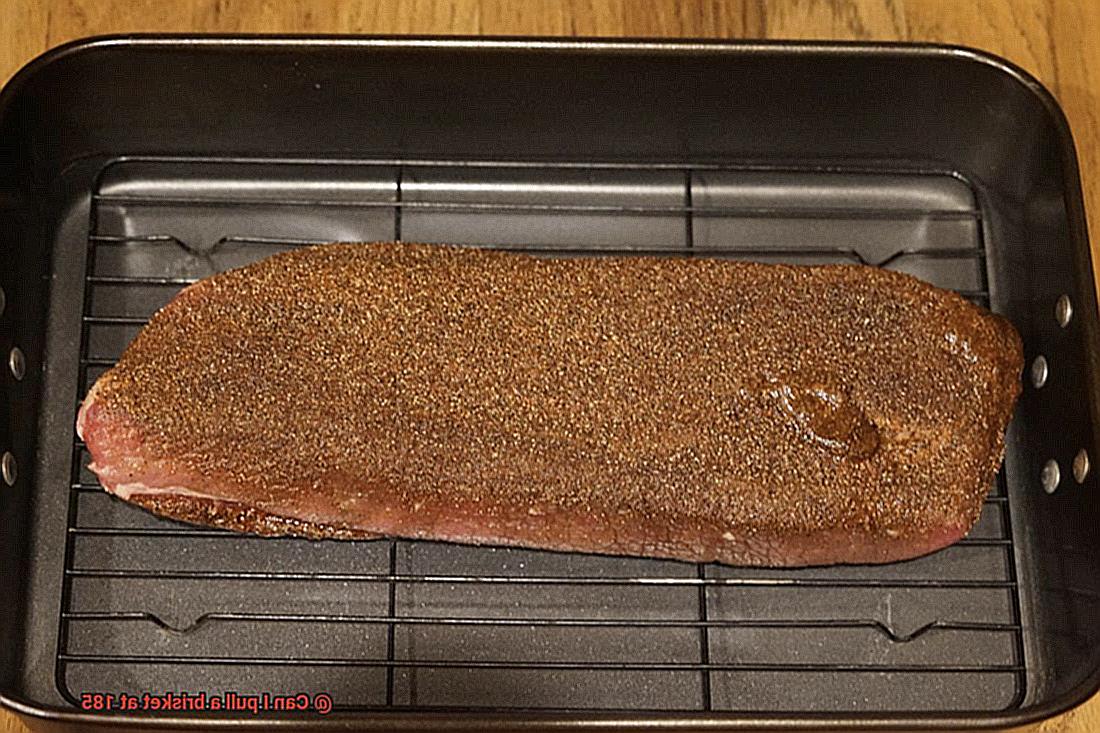
- Connective tissues are essential for providing structural support in the body and are primarily composed of collagen.
- Collagen, a fibrous protein, is responsible for the toughness of meat.
- Cuts like brisket contain an abundance of connective tissues and collagen due to the constant use of these muscles.
Low and Slow Cooking Methods:
- Opting for low and slow cooking methods, such as smoking or braising, is ideal for breaking down connective tissues and collagen.
- The magic lies in subjecting the meat to prolonged exposure to low temperatures.
- This slow cooking process allows the collagen to gradually convert into gelatin, resulting in tender meat that practically falls apart.
Temperature Range for Breakdown:
- The breakdown of collagen commences at around 160-170°F (71-77°C).
- Within this temperature range, the collagen fibers begin to unwind, becoming more flexible.
- Once the temperature reaches approximately 185°F (85°C), the collagen undergoes further breakdown, transforming into gelatin and yielding tender, juicy meat.
Factors Influencing Breakdown:
- Time plays a crucial role in collagen breakdown. Cooking the brisket at a lower temperature for an extended period ensures a more thorough breakdown of collagen, ultimately leading to unparalleled tenderness.
- The quality of the meat also affects the breakdown process. Briskets from younger animals or those with higher levels of intramuscular fat (marbling) tend to result in more tender outcomes.
By understanding these sub-topics, grillers can embark on their quest for the perfect brisket. Patience becomes a virtue as the low and slow cooking method takes center stage. Monitoring the temperature becomes an art form, akin to a conductor guiding an orchestra. And finally, allowing the brisket to rest before indulging in its succulent flavors is a crucial step on this culinary journey.
What Does Pulling Mean?
In the world of grilling, pulling is a technique that can take your meat to the next level of tenderness and flavor. It is commonly used for large cuts like brisket, but can also be applied to other meats such as pork shoulder or chicken.
Here’s a breakdown of the process of pulling in grilling:
- Slow and low cooking: Pulling is typically done after the meat has been cooked slowly at a low temperature for an extended period. This allows the connective tissues in the meat to break down and become tender. The collagen in these tissues starts to convert into gelatin, resulting in a moist and flavorful end product.
- Internal temperature: To determine when to pull the meat, you need to monitor its internal temperature using a meat thermometer. For brisket, the sweet spot for pulling is usually around 185°F. At this temperature, the collagen has fully rendered, making the meat incredibly tender and juicy. However, personal preference plays a role here, and some pitmasters may choose to pull at slightly higher or lower temperatures.
- Resting period: Once the meat has reached the desired internal temperature, it’s crucial to let it rest before pulling. Resting allows the juices within the meat to redistribute, resulting in a more flavorful and moist end result. A brisket should rest for at least 30 minutes to an hour, covered with foil or placed in a cooler to retain heat.
- Shredding or pulling: After the resting period, it’s time to pull the meat apart. This can be done using forks or other tools to shred the meat into smaller pieces. The term “pulling” comes from this action of tearing the meat apart.
- Serving options: Pulled meat can be served in a variety of ways. It can be enjoyed on its own as a main dish or used as a filling for sandwiches or tacos. The shredded texture allows for easier incorporation into other dishes or sauces.
Temperature Range for Pulling a Brisket
When it comes to grilling a brisket and pulling it apart to achieve that melt-in-your-mouth tenderness, there are a few key factors to consider. Let’s dive into the temperature range for pulling a brisket and the important elements that come into play.
The ideal temperature range for pulling a brisket is between 195°F (90°C) and 205°F (96°C). This range ensures that the collagen and connective tissues in the meat have broken down sufficiently, resulting in a tender and juicy brisket. However, it’s important to note that every brisket is unique, so factors such as size, marbling, and personal preferences for tenderness can influence the desired internal temperature.
Different cooking methods, such as smoking, slow roasting, or using a sous vide, may require slight adjustments in temperature and cooking time. It’s essential to adapt your approach based on the specific technique you’re using.
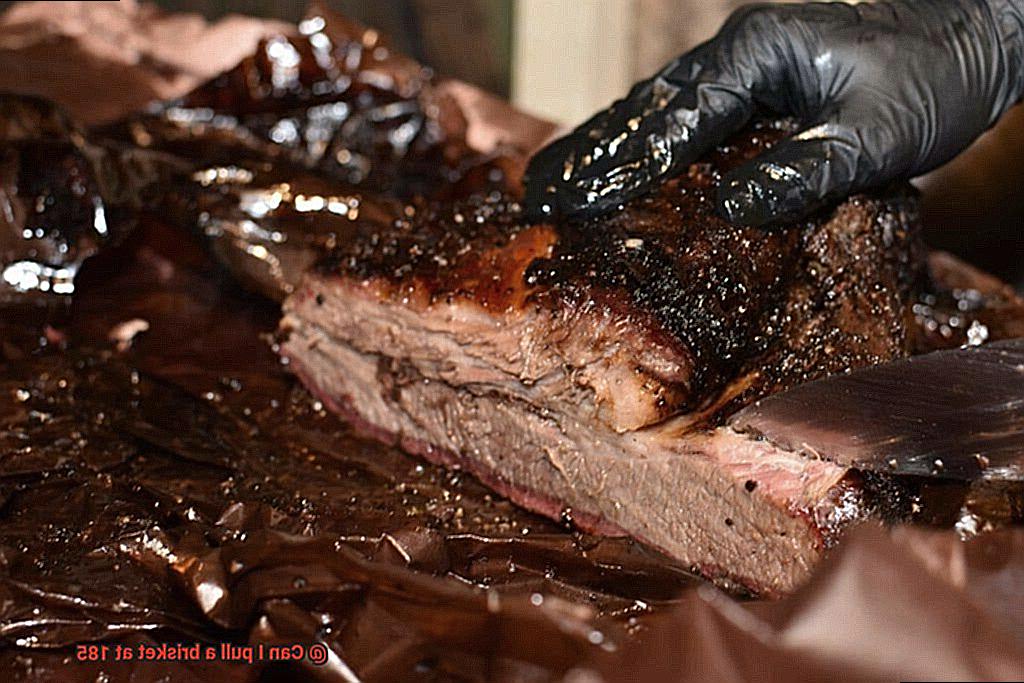
To accurately measure the internal temperature of your brisket, invest in a reliable meat thermometer. Insert the thermometer into the thickest part of the meat without touching any bones for an accurate reading. This will ensure that you’re cooking your brisket to the desired doneness.
Once your brisket has reached the desired internal temperature, allow it to rest before pulling it apart. This resting period allows the juices in the meat to redistribute, resulting in a more flavorful and moist final product. Resting times can range from 30 minutes to several hours, depending on personal preference.
Determining the temperature range for pulling a brisket may require some trial and error. It’s essential to consider factors such as desired tenderness, cooking method, and personal taste preferences when deciding on the ideal internal temperature for your pulled brisket.
Can You Pull a Brisket at 185 Degrees?
Here are some key points to consider:
- Internal Temperature: A brisket is typically fully cooked when the internal temperature reaches around 195 to 205 degrees Fahrenheit. This allows the collagen and connective tissues to break down, resulting in a tender and flavorful meat.
- Meat Quality: The quality of the meat plays a role in determining the cooking temperature. Well-marbled briskets with ample fat content can withstand higher cooking temperatures and remain juicy and tender. Leaner cuts may require lower cooking temperatures to prevent them from drying out.
- Cooking Method: Traditional low and slow smoking techniques require extended cooking times at lower temperatures, usually around 225 to 250 degrees Fahrenheit. In this case, pulling the brisket at 185 degrees may not allow enough time for the collagen and connective tissues to fully break down.
- Alternative Cooking Methods: Some pitmasters have experimented with alternative cooking methods, such as sous vide or reverse searing. These methods involve initially cooking the brisket at lower temperatures and then finishing it with a high-temperature sear. In these cases, pulling the brisket at 185 degrees may be feasible as the combination of low and high heat can still result in a tender and flavorful meat.
- Personal Preference: Ultimately, the decision to pull a brisket at 185 degrees should be based on personal preference and experimentation. It is important to note that food safety guidelines recommend cooking beef to a minimum internal temperature of 145 degrees Fahrenheit to ensure it is safe to consume.
Tips for Achieving Maximum Tenderness in Brisket
Start with a high-quality brisket:
The quality of the brisket is crucial in achieving maximum tenderness. Look for a well-marbled brisket with fat running through it. This fat will render down during cooking, keeping the meat moist and tender. A high-quality brisket will have better flavor and texture, resulting in a more enjoyable eating experience.
Trim excess fat:
While some fat is necessary for flavor and moisture, too much fat can make the brisket greasy and tough. Trim any excess fat from the brisket, leaving about 1/4 inch of fat on the surface. This will help to prevent the meat from becoming overly fatty and ensure that it cooks evenly.
Use a flavorful dry rub:
A delicious dry rub not only adds taste but also helps to tenderize the meat. Choose a rub with a good balance of salt, sugar, and spices. Apply the rub generously to all sides of the brisket, allowing it to sit for at least an hour before cooking. The spices in the rub will penetrate the meat, enhancing its flavor and helping to break down the tougher muscle fibers.
Cook low and slow:
Brisket is a tough cut of meat that requires long, slow cooking to break down collagen and connective tissues. Set your grill or smoker to a low temperature, around 225-250°F (107-121°C), and allow the brisket to cook slowly for several hours. This low and slow cooking method allows the meat to become tender and juicy, resulting in a melt-in-your-mouth texture.
Maintain consistent temperature:
Fluctuations in temperature can result in uneven cooking and tough meat. Keep a close eye on your grill or smoker to ensure that the temperature remains steady throughout the cooking process. Use a reliable thermometer to monitor the internal temperature of the brisket. Consistent temperature control is essential for achieving maximum tenderness in the meat.
Wrap in foil or butcher paper:
After a few hours of cooking, once the brisket has developed a beautiful bark, you can choose to wrap it in foil or butcher paper. This technique, known as the Texas crutch, helps to retain moisture and speed up the cooking process. Wrapping the brisket also prevents it from drying out. The foil or butcher paper creates a steamy environment that helps to break down the connective tissues and further tenderize the meat.
Rest before slicing:
Once your brisket reaches an internal temperature of around 195-205°F (90-96°C), it’s time to remove it from the heat. However, resist the temptation to slice it immediately. Allow the brisket to rest for at least 30 minutes, loosely covered with foil. This resting period allows the juices to redistribute throughout the meat, resulting in a more tender and flavorful brisket. Slicing too soon can cause the juices to escape, resulting in a drier and less tender brisket.
8Er9Hdnd50Q” >
Conclusion
In conclusion, the debate surrounding whether you can pull a brisket at 185 degrees Fahrenheit has ignited passions among pitmasters and barbecue enthusiasts alike. While the conventional wisdom advises waiting until the internal temperature hits 195-205 degrees Fahrenheit, there exists a bold contingent who swear by pulling their briskets at 185 degrees.
Indeed, it is possible to pull a brisket at 185 degrees, but this approach may not allow ample time for the collagen and connective tissues to fully dissolve. This method finds greater favor in alternative cooking techniques like sous vide or reverse searing, where a delicate dance between low and high heat can still yield succulent and delectable meat.
Ultimately, the decision to pull a brisket at 185 degrees hinges on personal preference and a willingness to experiment. It’s crucial to bear in mind that food safety guidelines necessitate cooking beef to an internal temperature of at least 145 degrees Fahrenheit for consumption without risk.
To achieve unrivaled tenderness in your brisket, begin with a premium cut of meat, trim any excess fat, apply an enticing dry rub, employ a slow and steady cooking process with unwavering temperature control, enfold the brisket in foil or butcher paper during its journey to perfection, and grant it ample rest before carving.
Mastering the art of pulling a brisket demands patience, practice, and an astute comprehension of how various factors such as temperature and cooking methods influence the final outcome.

